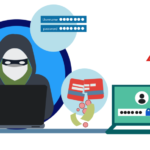Cybersecurity Best Practices for Small Businesses
Introduction
In today’s digital age, small businesses face increasing cybersecurity threats that can compromise sensitive data, disrupt operations, and damage reputations. Cybercriminals often target small businesses due to perceived weaker security defences compared to larger organizations.
This guide explores essential cybersecurity best practices to help small businesses protect their data and systems from modern threats. From securing networks to training employees, these strategies are designed to fortify your defenses and keep your business safe.
1. Secure Your Network
Why It Matters:
Hackers often exploit unprotected networks to gain unauthorized access to systems and data.
Best Practices:
- Use strong, unique passwords for routers and Wi-Fi networks.
- Enable WPA3 encryption for wireless connections.
- Regularly update router firmware to patch vulnerabilities.
- Use firewalls to monitor and filter incoming and outgoing traffic.
2. Implement Multi-Factor Authentication (MFA)
Why It Matters:
Passwords alone are no longer sufficient to protect accounts against breaches.
Best Practices:
- Require MFA for all business accounts and applications.
- Use authentication apps or hardware tokens instead of SMS-based MFA.
- Train employees to recognize and respond to MFA prompts effectively.
3. Keep Software and Systems Updated
Why It Matters:
Outdated software can have vulnerabilities that cybercriminals exploit.
Best Practices:
- Enable automatic updates for operating systems, antivirus software, and applications.
- Regularly update plugins and website platforms.
- Replace legacy systems that are no longer supported with secure alternatives.
4. Train Employees on Cybersecurity Awareness
Why It Matters:
Human error is a leading cause of data breaches.
Best Practices:
- Conduct regular training sessions on phishing, malware, and safe browsing habits.
- Simulate phishing attacks to test employee readiness.
- Create policies for strong passwords, secure document sharing, and mobile device usage.
5. Use Strong Password Policies
Why It Matters:
Weak passwords make it easier for attackers to gain access to accounts.
Best Practices:
- Enforce complex passwords with a mix of uppercase, lowercase, numbers, and symbols.
- Implement regular password changes.
- Use password managers to generate and store secure passwords.
6. Backup Data Regularly
Why It Matters:
Ransomware attacks can lock access to your data, leading to potential data loss.
Best Practices:
- Schedule automatic backups to secure cloud storage or offline devices.
- Test backups regularly to ensure data recovery works.
- Keep multiple copies of backups in separate locations.
7. Limit User Access and Permissions
Why It Matters:
Unnecessary access can lead to accidental or malicious data exposure.
Best Practices:
- Implement role-based access controls (RBAC).
- Restrict administrative privileges to only trusted personnel.
- Regularly review and revoke access for former employees or outdated roles.
8. Deploy Endpoint Protection
Why It Matters:
Devices like laptops and smartphones are common entry points for attacks.
Best Practices:
- Install antivirus and anti-malware tools on all devices.
- Use device management systems to monitor and secure endpoints.
- Enable remote wipe capabilities for lost or stolen devices.
9. Secure Cloud Services
Why It Matters:
Cloud storage and applications store sensitive business information and need proper protection.
Best Practices:
- Choose reputable cloud providers with robust security features.
- Enable encryption for stored and transmitted data.
- Use access controls and activity logs to monitor cloud usage.
10. Develop an Incident Response Plan
Why It Matters:
Quick response minimizes damage in the event of a cybersecurity breach.
Best Practices:
- Define roles and responsibilities for handling security incidents.
- Document steps for containment, investigation, and recovery.
- Test your response plan with simulated drills.
Final Thoughts
Cybersecurity is not a one-time effort but an ongoing process. Small businesses must proactively protect their systems and data to prevent costly breaches and ensure smooth operations. By implementing these best practices, businesses can significantly reduce their vulnerability to modern threats.




Leave a Reply
Want to join the discussion?Feel free to contribute!